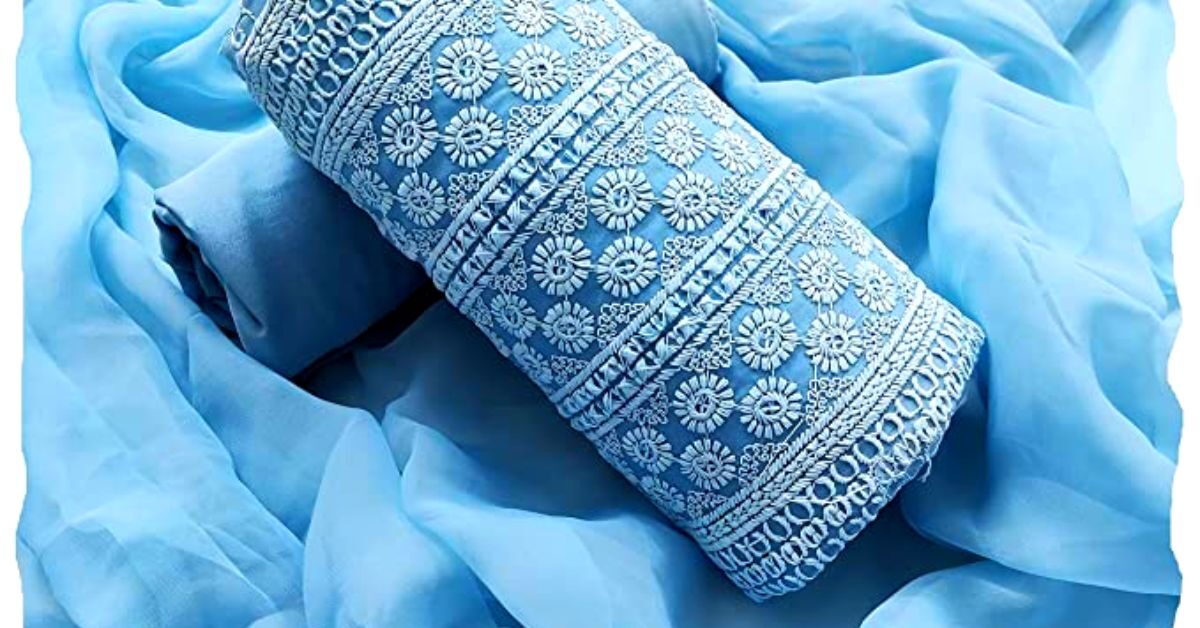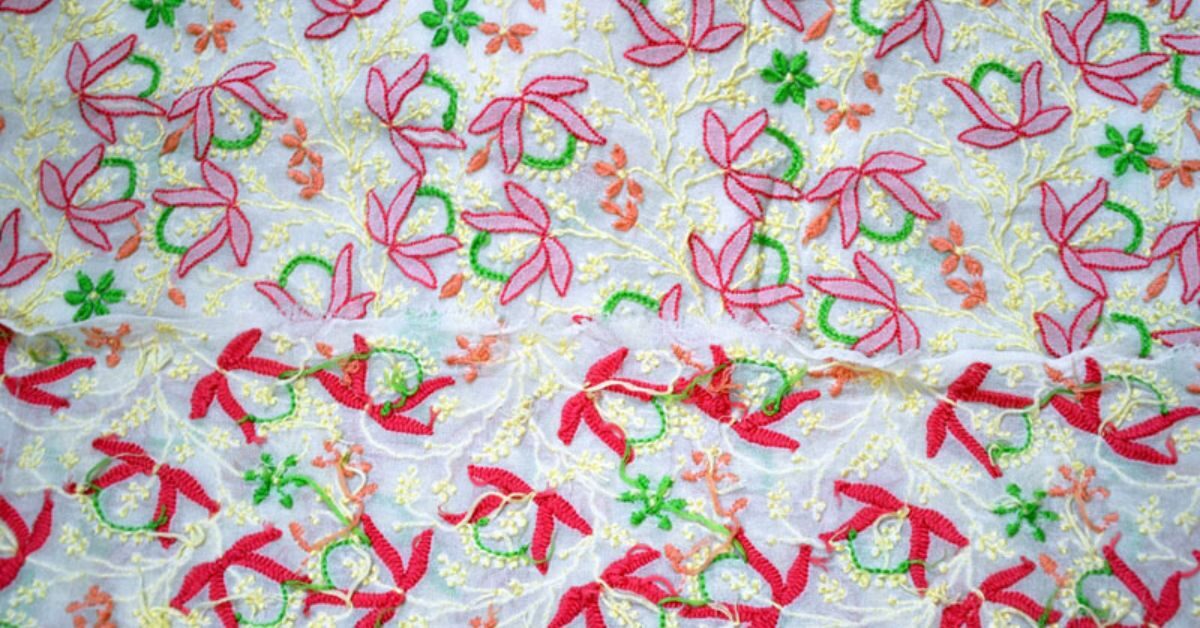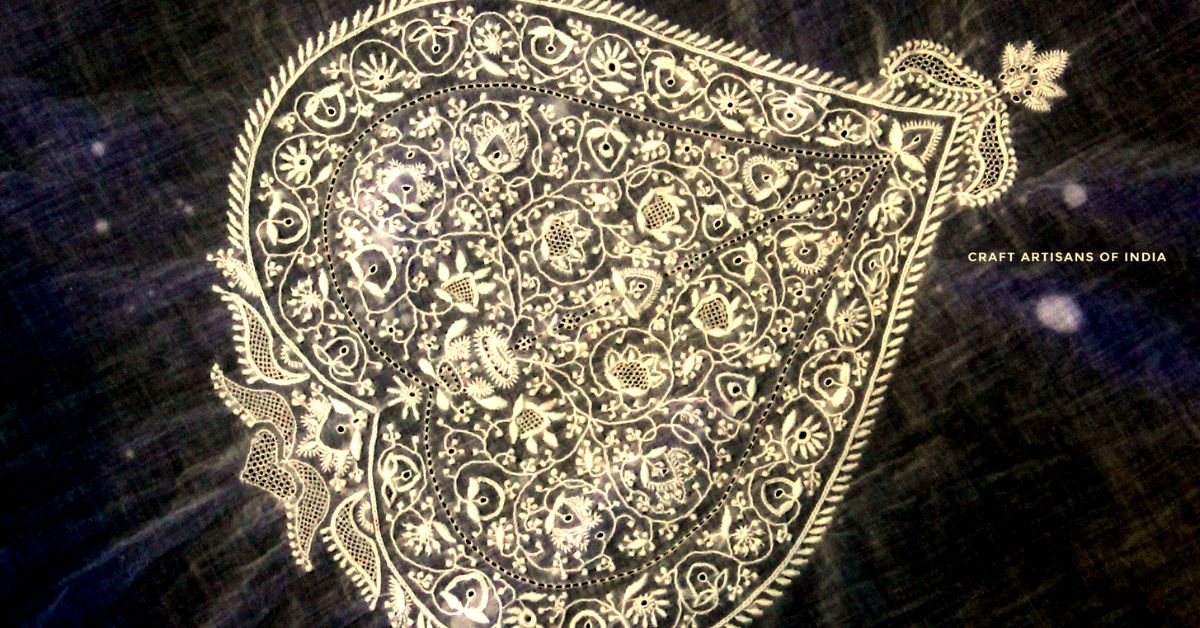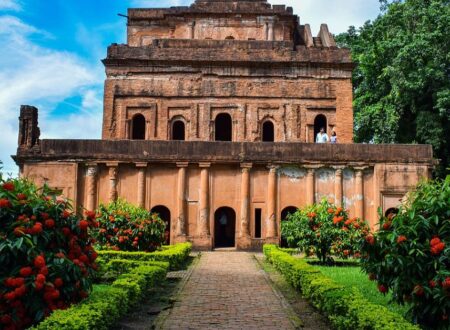Noor Jahan’s gift to India or the art of Shiraz from Persia? The many stories of the minimalistic beauty of Chikan ki Kadhai from the land of Nawabs- Lucknow. India has a treasure of some of the best Textiles in the world. With some of the boldest motifs, embellishments, and vibrant fabrics, what we miss out on sometimes are the beautiful hand-embroidery textiles and various handloom-made woven fabrics of the country.
The Hand-Embroidered fabric industry in India has been giving us some of the most stunning designs while being elegant and gracious without a lot of effort like embellishing and embossing etc. Some of the Notable Embroideries in India are the Aari, Banjara Embroidery, Banni or Heer Bharat, Chamba Rumal, Chikankari, Gota, Kamal Kadhai, Kantha, Karchobi, Kasuti, Kathi, Kaudi, Khneng, Kutch or Aribharat, Kutchi Bharat or Sindhi stitch, Kashmiri Embroidery, Mukaish Work, Phool Patti ka Kaam, Phulkari, Pichwai, Pipli, Rabari, shamilami, Shisha or mirrorwork, Toda, Zardozi or Zari or Kalabattu, etc
These are 26 different forms of just Hand Embroideries that India offers! Moreover, today we are going to focus on one of India’s favorites, the Chikankari Embroidery. At least 8/10 households will have a minimum of 1 Chikankari piece of clothing. Either in the form of dress materials, Kurtis, and sometimes even in pieces of home decor on rare occasions. Let’s get exploring travelers!

Chikankari- from the land of Nawabs Lucknow:
Lucknow is truly the home of Chikankari with thousands of artisans and craftsmen producing this elegant fabric design for years now. A place known as Chowk in Lucknow is just to the Chikan market for travelers to get their hands on authentic local chikan embroidery. Chikan ki Kadhai itself means embroidery which is using a thread. And thus you will find the fabric it is on in the lightest pastels and subtle colors. To make the thread work stand out. Even the fabrics are no royalty- simple cotton, georgette, muslin, chiffon, organza, net, etc are in use. While if you insist you may also get it on silk. The highlight of this piece of fabric is solely the delicate thread work usually done using white thread but also by using many other colorful threads.
Origin and History of Chikankari:
It is believed that the Lucknowi specialty is not originally from India but was bought to India by the Persians. Who presented their art in the Mughal Court. The traditional technique of Chikan resembles the white-on-white embroidery. And the artwork of the Shiraz region in Persia and thus is said to be from Persian Culture. A popular story mentions how travelers from Persia would often teach their art of chikan to locals of India in exchange for water to drink as they traveled for days months and years together. In the Mughal Empire, Noor Jahan the wife of Jahangir is the prime person who introduced India to the art of Chikankari. And did not keep it limited or restricted to the Royals only.
Chikankari is traditionally white on white embroidery however even though today colorful fabrics are introduced, the thread work is primarily white always.

The Technique of making Chikankari: Intricate artwork using thread.
Chikan embroidery was traditionally on cotton and muslin cloth of cool pastel shades and light colors. But since fashion evolves and to keep the art of Chikankari alive the embroidery has also adapted to new trends. Nowadays you can also find mirror work and other embellishments onto chikan work which was not originally a part.
Today Chikan’s work can be on almost any fabric. But the criteria remain using fabrics that would highlight the embroidery and thus sticking to light tones and shades of fabrics. The Embroider does not directly start stitching onto the cloth but uses the block printing technique to first trace the pattern desired onto the fabric and then to just finely match the print. The steps involved in making Chikankari are- Design, Engraving, Block printing, Embroidery, and then finally washing and finishing.
What makes chikan work stand out is the intricate detailing of the kind of stitching used. The embroider decides whether to create a lace pattern or a shadow pattern by using a back or Chain Stitch. The various kinds of stitching techniques used in Chikan’s work are- Tepchi, Bakhiya, and Hool. Others include zanzeera, Rahet, Banarasi, khatau, panda, murri, Jali Stitch, Turpai, Darzdari, pechani, Bijli, etc to name a few out of the many.
As per the Geographical Indication Registry Lucknow is officially the state where Chikankari is produced and sold.

Best places to Buy Chikankari in Lucknow:
- Nazarana Chikan store near Janpath Market, Hazratganj, Lucknow.
- Modern Chikan Emporium, Janpath Market, Hazrathganj, Lucknow.
- Shri SS Chikan Industry, Kanchan Market, Chowk, Lucknow.
- Vani Anand, opp botanical gardens, Rana Pratap Marg.
- SEWA (Self Employed Women’s Association) Brahma Nagar, Sitapur Road, Lucknow.
Thus, if you are planning on buying something simple, minimalist, and elegant that stands out while being subtle, you should certainly get your hands on Lucknowi Chikankari.






